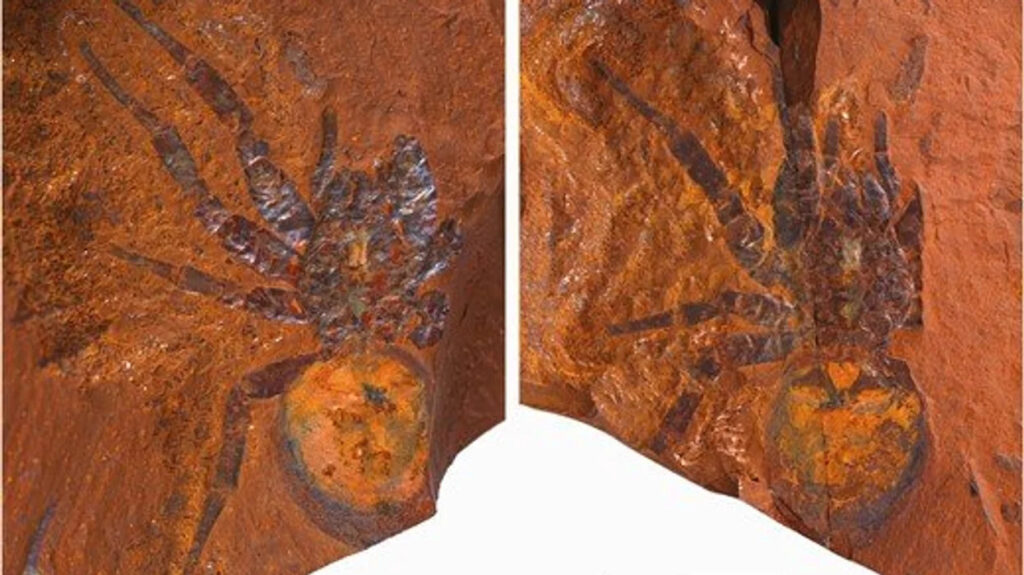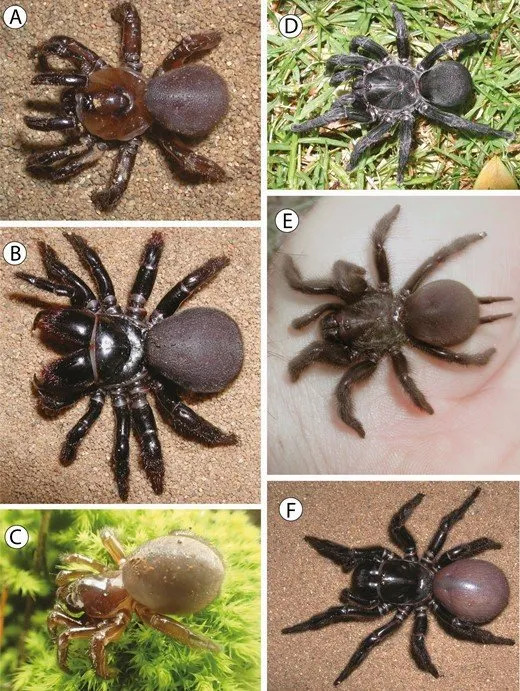In a remarkable discovery that sheds light on Australia’s arachnid history, scientists have recently unearthed a fossilized giant trapdoor spider in New South Wales. This prehistoric arachnid represents only the fourth specimen of its kind ever found in Australia, making it a significant breakthrough in the study of the country’s natural history.

This ancient spider, known as ‘Megamonodontium mccluskyi,’ thrived during the Miocene period, which occurred approximately 11 to 16 million years ago. According to a recent report filed by a team of researchers, this creature once inhabited the lush rainforests that covered the region. These rainforests, teeming with diverse life forms, including various plants, trapdoor spiders, giant cicadas, and wasps, have since given way to the grassland terrain now known as McGraths Flat.
Matthew McCurry, a palaeontologist from the University of New South Wales and the Australian Museum, emphasizes the rarity of spider fossils in Australia, stating, “Only four spider fossils have ever been found throughout the whole continent, which has made it difficult for scientists to understand their evolutionary history. That is why this discovery is so significant; it reveals new information about the extinction of spiders and fills a gap in our understanding of the past.”
Interestingly, the closest living relative of ‘Megamonodontium mccluskyi’ is currently found in the wet forests stretching from Singapore to Papua New Guinea, suggesting that this spider group once occupied similar environments in mainland Australia before going extinct as the continent’s climate shifted towards aridity.
The fossilized spider, remarkably well-preserved, was discovered amidst a trove of other Miocene fossils. Advanced scanning electron microscopy techniques allowed scientists to study minute details of the spider’s claws, setae, and other anatomical features. Based on these details, researchers confidently place it within the modern Monodontium family, commonly known as trapdoor spiders.

What sets ‘Megamonodontium mccluskyi’ apart is its colossal size. The body of this prehistoric spider measures an impressive 23.31 millimeters (just over an inch) in length, making it five times larger than its contemporary relatives. This finding not only adds to our understanding of prehistoric biodiversity but also provides insights into the region’s past climate.
The spider’s presence in a layer of rainforest sediment indicates that the region was once considerably wetter than it is today. This knowledge offers scientists a valuable perspective on how Australia’s climate has evolved and its impact on the country’s diverse life forms. It also serves as a crucial reminder of how climate change can potentially alter ecosystems and the species within them.
Renowned arachnologist Robert Raven of Queensland Museum noted, “Not only is it the largest fossilized spider to be found in Australia, but it is the first fossil of the family Barychelidae discovered worldwide. There are around 300 species of brush-footed trapdoor spiders alive today, but they don’t seem to become fossils very often. This could be because they spend so much time inside burrows and aren’t in the right environment to be fossilized.”
The fascinating findings of this research have been published in the Zoological Journal of the Linnean Society.
